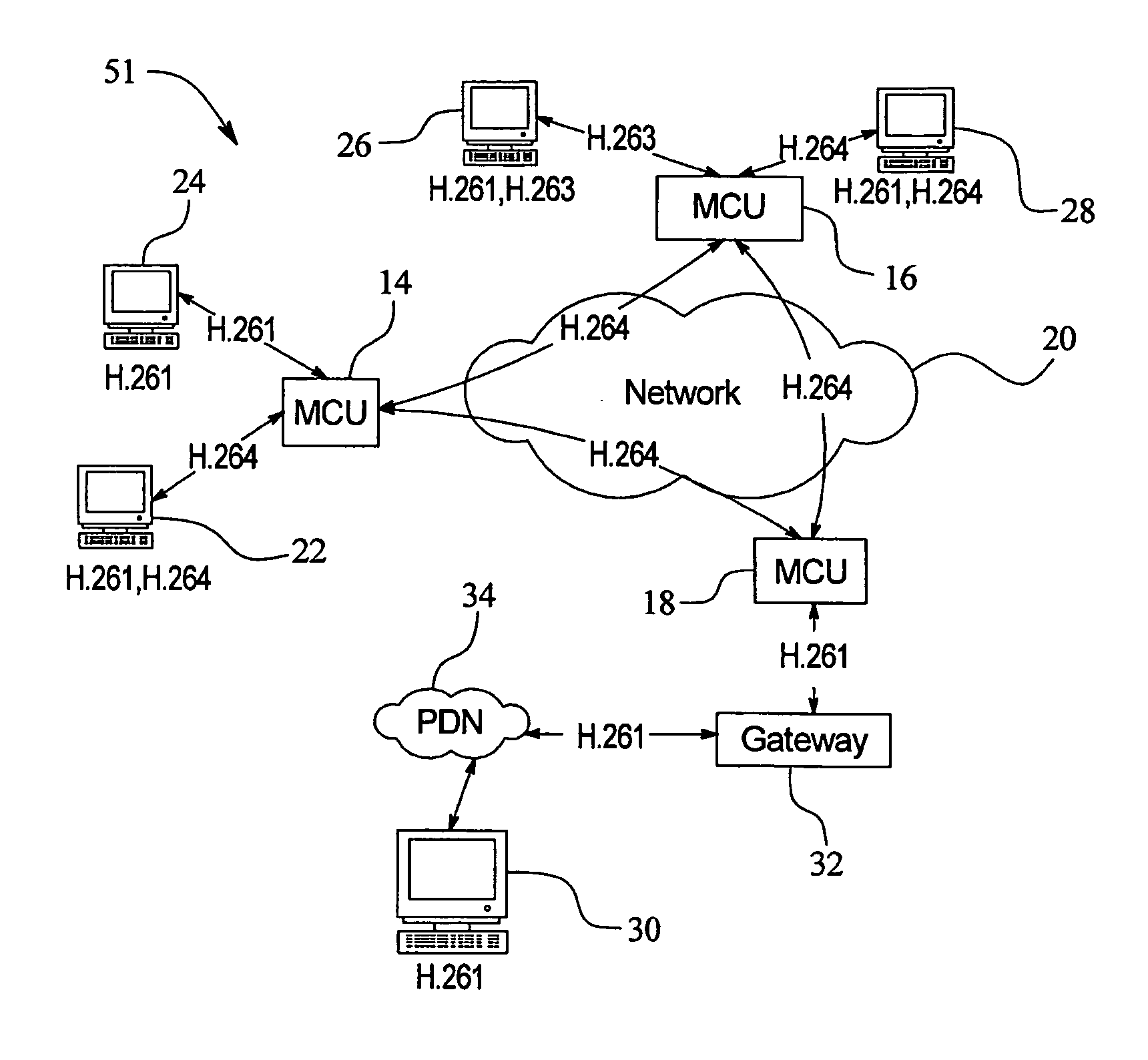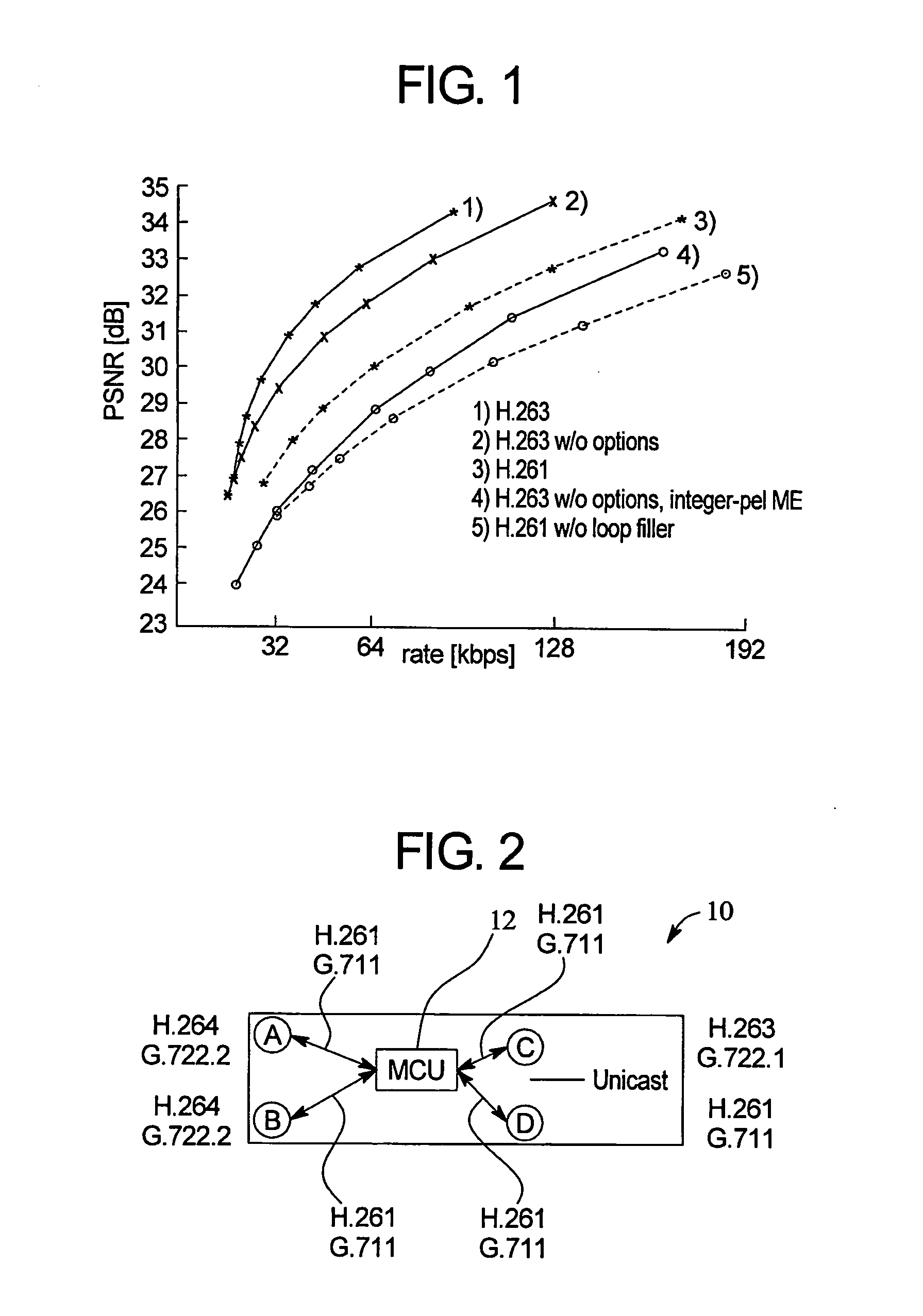System and method for high quality video conferencing with heterogeneous end-points and networks
a multi-point video conference and heterogeneous end-point technology, applied in the field of improving the quality of audio and video data in video conference, can solve the problems of significant bandwidth restrictions, complex coding and decoding algorithms, and significant degradation of the quality of media data available to the higher-end components, so as to improve the overall quality of media data in multi-point video conference with heterogeneous end-points, the effect of improving the data
- Summary
- Abstract
- Description
- Claims
- Application Information
AI Technical Summary
Benefits of technology
Problems solved by technology
Method used
Image
Examples
Embodiment Construction
[0033] The present invention relates to a method, system and apparatus for improving the quality of media data transmitted in multi-point video conferences having heterogeneous end-points. The present invention allows end-points to take advantage of their best, most efficient codecs despite the limitations of other end-points participating in a video conference, and despite bandwidth restrictions in the communication links forming the connections for the video conference.
[0034] Turning to FIG. 5, a block diagram of centralized multi-point video conference 14 is shown. The architecture of the video conference is substantially identical to the architecture of the centralized video conference 10 shown in FIG. 3. Like components have been given the same designations. Thus, a single multi-point control unit 10 communicates with video conference end-points A, B, C and D. End-points A, B and C support G.722.2 audio coding and H.264 video coding. End-point C supports G.722.1 audio coding a...
PUM
 Login to View More
Login to View More Abstract
Description
Claims
Application Information
 Login to View More
Login to View More - R&D
- Intellectual Property
- Life Sciences
- Materials
- Tech Scout
- Unparalleled Data Quality
- Higher Quality Content
- 60% Fewer Hallucinations
Browse by: Latest US Patents, China's latest patents, Technical Efficacy Thesaurus, Application Domain, Technology Topic, Popular Technical Reports.
© 2025 PatSnap. All rights reserved.Legal|Privacy policy|Modern Slavery Act Transparency Statement|Sitemap|About US| Contact US: help@patsnap.com



